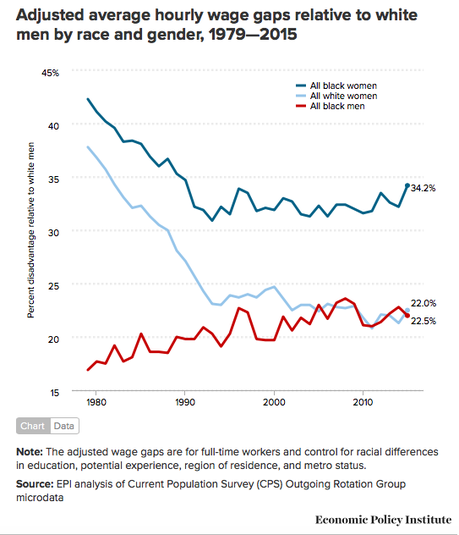
The right-wing would have us believe that racial problems in the U.S. have been solved. That is far from the truth. There are serious racial problems throughout American society. The following is part of an article Elise Gould wrote for the Economic Policy Institute. It illustrates just one aspect of the racial problem -- the huge gap in wages and wealth.
Black-white wage gaps are larger today that they were 35 years ago. For both men and women who work full time, the regression adjusted racial wage gap has widened since 1979. The figure (above) shows that, relative to the average hourly wages of white men with the same education, experience, metro status, and region of residence, black men make 22.0 percent less, and black women make 34.2 percent less.
Over the last few years, the labor market has been steadily improving, and the unemployment rate for all population sub-groups has fallen steadily. However, as has historically been the case, the black unemployment rate today (7.8 percent) remains nearly twice as high as the white unemployment rate (4.3 percent). And, black workers can’t educate themselves out of racial disparities in labor market performance. The unemployment rate for black college graduates sits at 4.0 percent, compared to 2.6 percent for white college graduates. Furthermore, average wages for white college graduates are far higher ($31.83 per hour) than average wages for black college graduates ($25.77).
The black-white wealth gap is larger than the wage or income gaps. Median white wealth ($134,000) is 12 times higher than median black wealth ($11,000). And, 27 percent of black households have zero net worth (or less), while only 9 percent of white household do. In other words, black Americans face particular difficulties in trying to get ahead themselves or helping their children get ahead—in achieving the elusive American dream.

